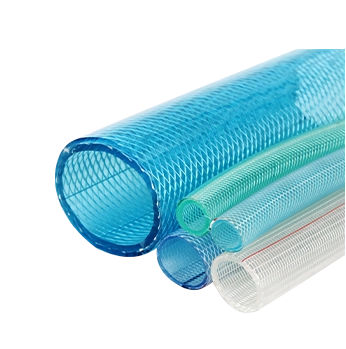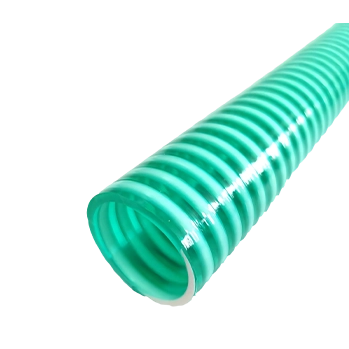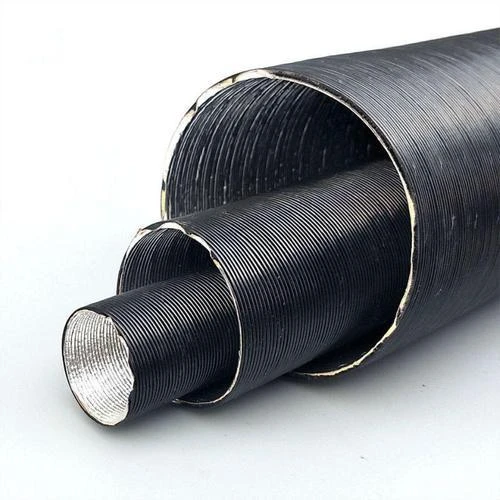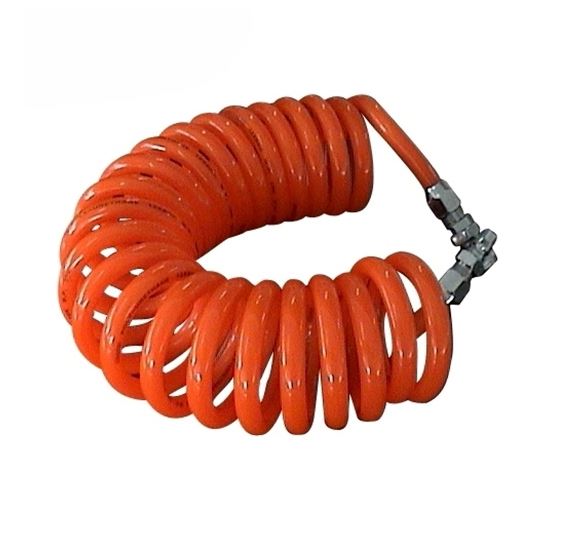Durable 3/8 PVC Air Hose: Lightweight, Flexible Air Tool Use
In the dynamic world of industrial operations, the humble air hose plays a pivotal role in ensuring the seamless flow of power to pneumatic tools and systems. Among the myriad options available, the **3 8 PVC air hose** stands out as a highly versatile and cost-effective solution. This comprehensive guide delves into the specifics of the 5 Layer Flexible PVC High Pressure AIR HOSE, exploring its technical prowess, manufacturing intricacies, diverse applications, and the benefits it brings to various sectors. We will also compare it with traditional alternatives like rubber hoses, providing insights into its superior performance and long-term value.
Industry Trends and The Rise of Advanced PVC Hoses
The global industrial hose market is experiencing significant growth, driven by increasing automation, demand from manufacturing sectors, and advancements in material science. There's a noticeable shift towards more durable, flexible, and eco-friendly hose solutions. PVC (Polyvinyl Chloride) hoses, particularly multi-layer constructions like the 5 Layer Flexible PVC High Pressure AIR HOSE, are at the forefront of this trend due to their excellent balance of performance and affordability. The market is increasingly demanding hoses that offer enhanced abrasion resistance, improved flexibility in varying temperatures, and superior pressure retention, all while being lighter and easier to handle. This evolution has made the **3 8 PVC air hose** a standard choice for a wide array of pneumatic applications.
Furthermore, concerns over worker safety and operational efficiency are pushing manufacturers to innovate. Hoses that resist kinking, are easy to coil, and maintain their integrity under harsh conditions directly contribute to safer workplaces and reduced downtime. This has fueled research and development into advanced PVC compounds and reinforcement techniques, making modern PVC air hoses vastly superior to their predecessors.

Figure 1: Demonstrating the superior flexibility of a multi-layer PVC air hose.
Technical Parameters and Product Specifications: The 5 Layer Flexible PVC High Pressure AIR HOSE
The 5 Layer Flexible PVC High Pressure AIR HOSE, specifically in the **3 8 PVC air hose** configuration, is engineered for optimal performance in demanding environments. Its innovative five-layer construction is key to its resilience and reliability. This design typically comprises an inner layer for smooth fluid flow, two intermediate layers for structural integrity and pressure resistance, a high-tensile polyester fiber reinforcement (braiding), and a tough outer layer for abrasion and weather protection. The combination of these layers provides exceptional burst pressure ratings and working pressure capabilities.
Key Product Features and Benefits:
- Superior Flexibility: Even in cold temperatures, the hose maintains excellent flexibility, reducing kinking and easing handling. This is critical for users needing a `50 ft pvc air hose` or longer lengths, where coiling and uncoiling can be cumbersome.
- High Pressure Resistance: Designed to withstand significant working pressures, making it ideal for various pneumatic tools and systems.
- Abrasion and Weather Resistance: The outer layer protects against cuts, abrasions, and ozone, extending the hose's service life.
- Lightweight Design: Compared to traditional rubber hoses, PVC alternatives are considerably lighter, reducing user fatigue.
- Oil and Chemical Resistance: Suitable for environments where exposure to oils, greases, and certain chemicals is common.
- Non-Marking: Typically designed to be non-marking, preventing scuffs on floors and surfaces.
- Long Service Life: Constructed with high-quality PVC compounds and reinforced for durability, ensuring a prolonged operational lifespan.
Typical Specifications for a 3 8 PVC Air Hose:
| Parameter | Value for 5 Layer Flexible PVC High Pressure AIR HOSE (3/8" ID) | Notes / Standard Compliance |
|---|---|---|
| Inner Diameter (ID) | 3/8 inch (9.5 mm) | Common industrial size for pneumatic tools. |
| Outer Diameter (OD) | ~16.0 mm - 17.5 mm | Varies slightly by manufacturer and layer thickness. |
| Wall Thickness | ~3.25 mm - 4.0 mm | Contributes to pressure rating and durability. |
| Working Pressure | 20 Bar (300 PSI) - 30 Bar (450 PSI) | ISO 5774 standard for plastic hoses. |
| Burst Pressure | 60 Bar (900 PSI) - 90 Bar (1350 PSI) | Typically 3 times the working pressure for safety (Safety Factor 3:1). |
| Temperature Range | -10°C to +65°C (14°F to 149°F) | Maintains flexibility and integrity within this range. |
| Material | High-grade PVC Compound, Polyester Fiber Reinforcement | Phthalate-free options available for specific applications. |
| Reinforcement | High-tensile Polyester Yarn Braiding | Critical for pressure handling and dimensional stability. |
| Weight (per 50 ft) | Approx. 3.5 - 4.5 kg (7.7 - 9.9 lbs) | Significantly lighter than comparable rubber hoses. |
| Minimum Bend Radius | ~80 mm - 100 mm | Indicates flexibility without kinking. |
| Standard Color | Blue, Red, Yellow, Green, Black (Customizable) | Commonly used for identification in different lines. |

Figure 2: A reinforced PVC hose designed for high-pressure applications, highlighting its robust construction.
The Manufacturing Process: Crafting a Durable 3 8 PVC Air Hose
The creation of a high-quality 5 Layer Flexible PVC High Pressure AIR HOSE involves a sophisticated multi-stage manufacturing process, emphasizing precision and adherence to strict quality control standards. Kebing Hose, for instance, leverages advanced thermo-plastic extrusion technology and meticulous layering techniques to ensure consistent product excellence. Here's a detailed breakdown of the typical manufacturing flow:
Process Flow Explained:
-
Raw Material Selection & Preparation:
The journey begins with the careful selection of virgin PVC resins and specialized additives (plasticizers, UV stabilizers, anti-aging agents, colorants). These components are meticulously weighed and blended in high-speed mixers to create a homogeneous PVC compound. The precise formulation determines the hose's final properties like flexibility, temperature resistance, and durability. Kebing adheres to REACH and RoHS directives, ensuring environmentally responsible material sourcing.
(Visual Aid Concept: A diagram showing various raw material inputs flowing into a large mixing silo.)
-
Inner Layer Extrusion:
The prepared PVC compound is fed into an extruder. Under controlled heat and pressure, the PVC melts and is forced through a die, forming the seamless inner tube (the first layer). This layer is critical as it's directly exposed to the conveyed air, requiring a smooth surface to minimize pressure drop and a robust composition to prevent air leakage. The extrusion parameters, such as temperature profile and screw speed, are precisely controlled to ensure a uniform wall thickness and concentricity.
(Visual Aid Concept: A schematic illustrating an extruder machine, with molten PVC being pushed through a die to form a tube.)
-
Intermediate Layer Extrusion & Bonding:
Immediately after the inner layer is formed and slightly cooled, one or more additional PVC layers are extruded directly onto its surface. These intermediate layers contribute to the hose's overall structural integrity and pressure resistance. A crucial aspect here is the proper bonding between layers, often achieved through specific PVC formulations that promote adhesion or through co-extrusion techniques.
-
Reinforcement Braiding (High-Tensile Polyester Fiber):
This is a critical step for creating a "high-pressure" hose. The multi-layered PVC tube then enters a braiding machine. Here, high-strength polyester yarns are precisely wound around the tube in a crisscross pattern. This textile reinforcement provides the hose with its exceptional burst strength and resistance to elongation under pressure. The quality of the braiding (e.g., weave density, yarn tension) directly impacts the hose's performance and service life. A well-braided **3 8 PVC air hose** will exhibit minimal expansion under pressure.
(Visual Aid Concept: An animation or series of images depicting threads being woven around a core tube in a braiding machine.)
-
Outer Layer Extrusion:
A final, tougher PVC layer is then extruded over the reinforced core. This outer jacket is formulated to provide maximum resistance against abrasion, ozone, UV radiation, and general wear and tear, protecting the internal structure and extending the hose's outdoor life. This layer also determines the hose's color and surface finish.
-
Cooling and Sizing:
After the final extrusion, the hot hose is passed through a series of cooling tanks (typically water baths) to solidify the PVC and set its dimensions. Precision cooling ensures the hose maintains its intended diameter and prevents deformation. Sizing tools or vacuum systems might be used to maintain the exact outer diameter.
-
Marking, Cutting & Coiling:
Once cooled, the hose is marked with product specifications (e.g., size, pressure rating, manufacturer name) using inkjet or hot foil printing. It is then cut to specific lengths (e.g., 50 ft, 100 ft) and carefully coiled for packaging. Automatic coiling machines ensure neat, kink-free coils.
-
Quality Control & Testing:
Throughout the entire process, rigorous quality control checks are performed. This includes:
- Dimensional Checks: Measuring ID, OD, and wall thickness.
- Pressure Testing: Hoses are subjected to specified working and burst pressures to verify their integrity and safety factor (e.g., 3:1 burst to working pressure ratio). This often follows ISO 1402 or ASTM D380 standards.
- Flexibility & Kink Resistance Tests: Assessing the hose's ability to bend without kinking or collapsing.
- Tensile Strength & Elongation Tests: Verifying the strength of the PVC and reinforcement materials.
- Abrasion Resistance Tests: Evaluating the durability of the outer jacket.
- Adhesion Tests: Ensuring proper bonding between layers.
- Material Hardness (Durometer) Tests: Checking the specified hardness of the PVC.
(Visual Aid Concept: A flowchart depicting the entire process, with arrows connecting each stage and specific quality checkpoints highlighted.)
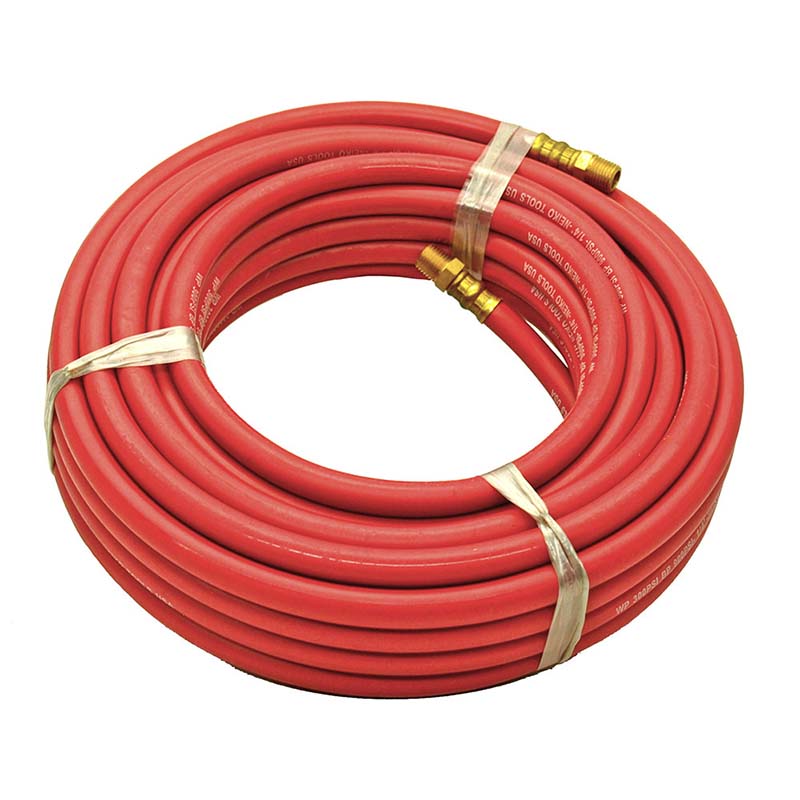
Figure 3: Quality control is paramount in the production of high-performance PVC air hoses.
Technical Advantages and Application Scenarios
The inherent properties and meticulous manufacturing process of the 5 Layer Flexible PVC High Pressure AIR HOSE contribute to a compelling set of technical advantages, making it a preferred choice across numerous industries.
Key Technical Advantages:
- Superior Kink Resistance: The multi-layer construction, especially with the high-tensile polyester reinforcement, provides excellent structural integrity, minimizing kinking even when pulled around corners or coiled tightly. This is a significant improvement over single-layer PVC hoses or some rubber hoses prone to collapsing.
- Excellent Abrasion Resistance: The robust outer PVC layer is formulated to withstand dragging across concrete, sharp edges, and general shop floor abuse, significantly extending the hose's lifespan in demanding industrial settings. This property directly translates to reduced replacement costs and downtime.
- Oil and Chemical Compatibility: PVC offers good resistance to many common industrial oils, greases, and mild chemicals, making it versatile for workshops, automotive garages, and light manufacturing where such exposure is likely. This broad compatibility reduces the need for specialized, more expensive hoses.
- UV and Ozone Resistance: Unlike some rubber compounds that degrade under prolonged UV exposure, modern PVC formulations incorporate UV stabilizers, ensuring the hose remains flexible and crack-resistant even in outdoor applications. This makes it suitable for construction sites or agricultural use where hoses are often exposed to sunlight.
- Lightweight and Easy Handling: The material density of PVC is lower than rubber, making a **3 8 PVC air hose** substantially lighter. This ergonomic advantage reduces operator fatigue, especially when working with long lengths like a `50 ft pvc air hose`, and makes coiling and storage much easier.
- Cost-Effectiveness: While offering high performance, PVC hoses are generally more economical than their rubber counterparts, providing an excellent balance of performance and budget. Their long service life also contributes to lower total cost of ownership.
- High Visibility Options: Often available in bright colors (e.g., neon yellow, safety orange), enhancing safety in busy work environments by making the hose clearly visible and reducing tripping hazards.
Applicable Industries and Typical Use Cases:
The versatility of the **3 8 PVC air hose** allows it to serve a broad spectrum of industries:
- Automotive & Garages: Powering impact wrenches, air drills, tire inflators, and paint spray guns in auto repair shops and body shops. Its oil resistance is particularly beneficial here.
- Construction Sites: Connecting pneumatic nail guns, staplers, and other tools, providing a lightweight yet durable solution that can withstand rough terrain and exposure to elements.
- Manufacturing & Assembly Lines: Essential for powering various pneumatic actuators, clamping systems, and production line tools. Its flexibility aids in routing around machinery.
- Woodworking & Carpentry: Ideal for air compressors used with nail guns, sanders, and other pneumatic tools in workshops, offering good resistance to sawdust and wood chips.
- Agriculture: Used for powering pneumatic tools for maintenance of farm equipment, or for certain low-pressure irrigation applications, where its UV resistance is advantageous.
- General Industrial Maintenance: For routine maintenance tasks, workshops, and facilities where compressed air is a common utility.
- DIY & Home Use: For homeowners using air compressors for various tasks from tire inflation to light carpentry.
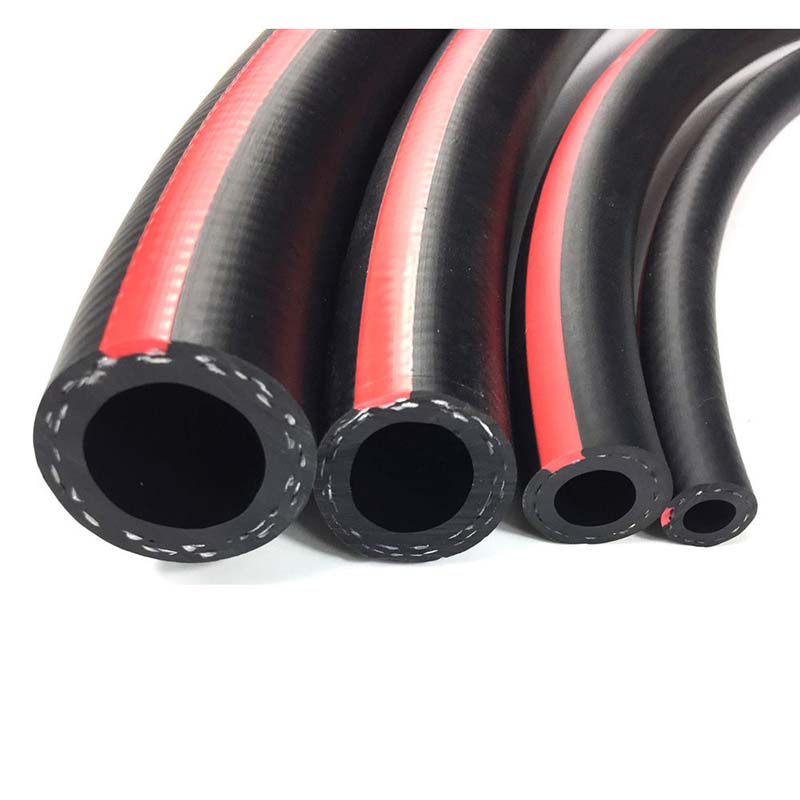
Figure 4: A 3/8 PVC air hose in action, powering pneumatic tools in a demanding industrial setting.
PVC Air Hose vs. Rubber Air Hose: A Comparative Analysis
When selecting an air hose, the choice often narrows down to PVC or rubber. While both serve the same fundamental purpose, their material properties lead to distinct advantages and disadvantages. Understanding these differences is crucial for making an informed decision that balances performance, durability, and cost-effectiveness. The 5 Layer Flexible PVC High Pressure AIR HOSE addresses many perceived drawbacks of older PVC formulations, closing the gap with rubber hoses in many aspects while retaining inherent PVC benefits.
| Feature | PVC Air Hose (e.g., 5 Layer Flexible PVC High Pressure AIR HOSE) | Rubber Air Hose |
|---|---|---|
| Material Composition | Polyvinyl Chloride (PVC) compound, often with polyester fiber reinforcement. | Synthetic rubber (e.g., EPDM, SBR) with textile or wire reinforcement. |
| Flexibility (Cold Weather) | Excellent flexibility, designed to remain pliable even at low temperatures (-10°C). | Can become stiff and prone to cracking at very low temperatures. |
| Weight | Significantly lighter, reducing user fatigue and easing transport/storage. | Heavier, especially in longer lengths like a `50 ft pvc air hose`. |
| Abrasion Resistance | Very good, especially with reinforced outer layers. Resists cuts and scuffs. | Excellent, typically superior to basic PVC, but can still wear over time. |
| Kink Resistance | Excellent with multi-layer, reinforced designs; less prone to kinking than older PVC. | Good, less prone to permanent kinks compared to older PVC. |
| Chemical/Oil Resistance | Good resistance to oils, grease, and many common industrial chemicals. | Varies by rubber compound; some types offer excellent resistance, others may degrade. |
| UV/Ozone Resistance | Good with UV stabilizers; less prone to cracking from outdoor exposure. | Can degrade and crack over time with prolonged UV and ozone exposure. |
| Cost | Generally more cost-effective, offering high performance at a competitive price. | Higher initial cost. |
| Surface Finish | Smooth, often non-marking, available in various colors for identification. | Often a rubbery, black finish; can leave marks on surfaces. |
| Repairability | Difficult to repair if punctured; typically replaced. | Can sometimes be patched or spliced, depending on damage. |
| Applications | General industrial, automotive, construction, woodworking, DIY where flexibility, lightweight, and cost are key. | Heavy-duty industrial, welding, outdoor, very high-pressure applications where extreme durability is paramount. |
In conclusion, while rubber hoses have their place in extremely heavy-duty, high-heat, or abrasive environments, modern multi-layer PVC hoses like the 5 Layer Flexible PVC High Pressure AIR HOSE provide an overwhelmingly superior value proposition for the vast majority of compressed air applications. Their advancements in flexibility, durability, and pressure ratings mean that for most industrial and commercial needs, a **3 8 PVC air hose** is the practical and economical choice, especially a `50 ft pvc air hose` for extended reach.
Manufacturer Comparison and Custom Solutions: Why Kebing Hose Excels
Choosing the right manufacturer is as crucial as selecting the right hose. A reputable manufacturer doesn't just produce hoses; they provide expertise, ensure consistent quality, and offer tailored solutions. Kebing Hose has established itself as a leader in the industrial hose sector, particularly in the production of high-performance PVC hoses like the 5 Layer Flexible PVC High Pressure AIR HOSE.
What Sets Kebing Hose Apart:
- Decades of Expertise: With over 15 years in the hose manufacturing industry, Kebing Hose possesses profound knowledge in material science, extrusion technology, and quality engineering. This deep understanding translates directly into superior product design and performance for every **3 8 PVC air hose** produced.
- Commitment to Quality & Certifications: Kebing Hose operates under strict ISO 9001 certified quality management systems. This ensures that every stage, from raw material inspection to final product testing, adheres to international benchmarks. Our products regularly undergo rigorous testing, including burst pressure tests (typically exceeding a 3:1 safety factor), kink resistance, and abrasion resistance tests, conforming to ASTM D380 and ISO standards.
- Advanced R&D Capabilities: We invest significantly in research and development to continuously improve our PVC formulations and manufacturing processes. This commitment allows us to develop hoses with enhanced flexibility, broader temperature ranges, and increased resistance to specific chemicals or environmental factors, meeting evolving industry demands.
- Customer-Centric Approach & Customization: We understand that every application can have unique requirements. Kebing Hose offers comprehensive customization options, including:
- Specific Lengths: From short lengths to bulk rolls of `50 ft pvc air hose` or more.
- Color Coding: Custom colors for easy identification of air lines or safety purposes.
- Custom Pressure Ratings: Adjusting reinforcement for specific working pressure demands.
- Special Formulations: Hoses with enhanced UV resistance, oil resistance, or non-marking properties.
- Branding & Packaging: Custom printing on the hose and tailored packaging solutions.
- Global Supply Chain & Reliable Delivery: With an optimized production process and robust logistics, Kebing Hose ensures timely delivery to clients worldwide, minimizing lead times and supporting continuous operations. Our average lead time for standard orders is 15-20 days, with expedited options available.
- Dedicated Technical Support: Our team of engineers and product specialists provides expert guidance, helping clients select the optimal hose for their specific needs and troubleshoot any application challenges.
By partnering with Kebing Hose, businesses gain not just a product, but a reliable solution backed by expertise, quality assurance, and a commitment to customer success. Our long-standing relationships with major distributors and industrial end-users globally are a testament to our authoritativeness and trustworthiness in the market.

Figure 5: Highlighting the quality and customization options available for Kebing's PVC air hoses.
Application Cases & Customer Feedback
The real-world performance of the 5 Layer Flexible PVC High Pressure AIR HOSE speaks volumes about its effectiveness and reliability. Here are generalized examples and types of feedback that underscore its value:
Case Study 1: Automotive Assembly Plant
A large automotive assembly plant required a lightweight yet durable air hose for its robotic pneumatic tools and manual workstations. Their previous rubber hoses were heavy, causing operator fatigue, and prone to leaving scuff marks on the painted floor. They switched to Kebing's **3 8 PVC air hose** in a `50 ft pvc air hose` length. The feedback was overwhelmingly positive: "The new PVC hoses are incredibly light, making our operators' jobs much easier. The non-marking feature is a huge plus, saving us significant cleanup time. We've also noticed a reduction in hose replacements due to kinking and abrasion. This has directly contributed to a 15% increase in tool maneuverability and a 5% reduction in maintenance costs over the last quarter."
Case Study 2: Construction Site Pneumatic Operations
A construction company faced challenges with air hoses cracking in cold weather and getting damaged by sharp debris on job sites. They adopted the 5 Layer Flexible PVC High Pressure AIR HOSE for their nail guns and demolition hammers. "We needed a hose that could withstand the rigors of a construction environment," reported the site supervisor. "The **3 8 PVC air hose** from Kebing maintains its flexibility even when temperatures drop below freezing, and its outer layer has proven remarkably resistant to punctures and abrasions. We've seen a 20% improvement in hose longevity compared to our previous suppliers, leading to fewer job delays and material waste."
Customer Testimonials:
- "Kebing Hose's 5 Layer PVC air hose is a game-changer for our woodworking shop. It's so much lighter than our old rubber hoses, and it never kinks, even when we're dragging a `50 ft pvc air hose` around the shop. Highly recommended!" – *Shop Manager, Custom Cabinetry*
- "We appreciate the consistent quality and rapid delivery from Kebing. Their **air pvc pipe** solutions have significantly improved our operational efficiency across multiple production lines." – *Procurement Head, General Manufacturing*
- "The technical support from Kebing was excellent. They helped us select the perfect **3 8 PVC air hose** for our specific high-pressure needs, and the product has performed flawlessly." – *Maintenance Engineer, Petrochemical Facility*
Trustworthiness and Support
At Kebing Hose, we believe that delivering a superior product is only half the equation. Building lasting trust with our clients requires transparency, robust support, and clear commitments. Our approach to trustworthiness encompasses comprehensive product information, strong warranties, and readily available customer support.
Frequently Asked Questions (FAQ)
Q1: What does "3/8" refer to in **3 8 PVC air hose**?
A1: The "3/8" (or 3/8 inch) refers to the nominal inner diameter (ID) of the hose. This is a standard size for connecting to many common pneumatic tools and quick couplers, indicating the approximate bore size through which compressed air flows.
Q2: What is the benefit of a "5 Layer Flexible" construction?
A2: The 5-layer construction significantly enhances the hose's performance. Each layer serves a specific purpose: an inner core for smooth flow, intermediate layers for structural integrity, high-tensile polyester fiber braiding for burst pressure resistance, and a durable outer layer for protection against abrasion, UV, and chemicals. This multi-layer design provides superior flexibility, higher pressure ratings, and extended service life compared to single or triple-layer hoses.
Q3: Can this hose be used in cold weather?
A3: Yes, the 5 Layer Flexible PVC High Pressure AIR HOSE is designed to maintain excellent flexibility in cold temperatures, typically down to -10°C (14°F). This minimizes stiffening and kinking, which are common issues with inferior PVC hoses in cold environments, ensuring consistent performance year-round.
Q4: What is the typical service life of this PVC air hose?
A4: With proper care and use within its specified temperature and pressure ranges, the 5 Layer Flexible PVC High Pressure AIR HOSE can have a service life of 5 to 10 years or even longer in less demanding applications. Factors like abrasive environments, chemical exposure, and consistent over-pressurization can affect longevity.
Q5: Is the hose resistant to oil and chemicals?
A5: Yes, the PVC compound used in this hose provides good resistance to many common industrial oils, greases, and mild chemical solutions. However, it's always recommended to consult our technical data sheet for specific chemical compatibility if the hose will be exposed to strong or unusual chemicals.
Q6: How does the weight of a **PVC air hose vs rubber** air hose compare?
A6: PVC air hoses, particularly multi-layer designs like ours, are significantly lighter than comparable rubber air hoses. This makes them easier to handle, coil, and transport, reducing user fatigue and improving overall ergonomics, especially for longer lengths like a `50 ft pvc air hose`.
Q7: What quality standards does Kebing Hose adhere to for its **air pvc pipe** products?
A7: Kebing Hose operates under an ISO 9001 certified quality management system. Our products undergo rigorous testing and meet relevant international standards such as ISO 1402 for hose burst pressure and ASTM D380 for general rubber hose testing. We also comply with environmental directives like REACH and RoHS where applicable.
Delivery and Support:
- Delivery Cycle: Standard production and delivery for common orders typically range from 15 to 25 business days, depending on order volume and customization requirements. Expedited shipping options are available upon request.
- Quality Assurance & Warranty: Kebing Hose provides a comprehensive warranty against manufacturing defects. Our products are engineered for longevity and performance, backed by stringent quality control processes and independent testing. Specific warranty terms are available upon inquiry.
- Customer Support: Our dedicated customer service team is available to assist with product inquiries, technical support, order tracking, and after-sales service. We are committed to ensuring customer satisfaction through responsive and expert assistance.
Citations and Further Reading:
- The Global Industrial Hose Market: For deeper insights into market trends and projections, refer to reports by industry analysts such as "Industrial Hose Market by Material (Rubber, PVC, Silicone, PU, Others), Media (Air, Fluid, Material, Chemicals), End-Use Industry, and Region – Global Forecast to 2026." (Example: MarketsandMarkets or Grand View Research reports, accessible via their respective websites, e.g., marketsandmarkets.com or grandviewresearch.com).
- Polyvinyl Chloride (PVC) Properties and Applications: For detailed information on PVC material science and its applications in hose manufacturing, academic journals and industry publications offer extensive research. A good starting point would be the "Journal of Vinyl & Additive Technology" or resources from organizations like The Plastics Industry Association (PLASTICS). (Example: Search for PVC in industrial applications on academic databases like Google Scholar or industry portals like plasticsindustry.org).
- International Standards for Hoses: Understanding the specific testing methodologies and performance requirements for industrial hoses can be found in standards bodies' publications. Key organizations include the International Organization for Standardization (ISO) and ASTM International. (Example: Refer to specific standards like ISO 1402 "Rubber and plastics hoses – Guidelines for the storage of hoses and hose assemblies" or ASTM D380 "Standard Test Methods for Rubber Hoses" on their official websites, e.g., iso.org or astm.org).
- Industry Forums and Discussions: For practical insights and user experiences, industry-specific forums and professional communities can be valuable. Websites like Eng-Tips Forums or specialized LinkedIn groups for pneumatic systems and industrial equipment often feature discussions on hose selection and performance.
-
Strong suction and flexibility: The versatile application of PVC suction hosesNewsAug.05,2025
-
Steel wire reinforcement, tough protection: The road to upgrading the strength of Wire Reinforced PVC HoseNewsAug.05,2025
-
Resilience and Flexibility Coexist: A New Industrial Perspective for Pvc Air HosesNewsAug.05,2025
-
Pulse of Efficient Transmission: The Excellent Performance and Multiple Applications of PU Pneumatic HoseNewsAug.05,2025
-
Enduring Pressure: The Industrial Mission of High Pressure Lay Flat HoseNewsAug.05,2025
-
Durable Water Conveyance: The Practical Value and Technical Charm of PVC WATER HOSESNewsAug.05,2025



